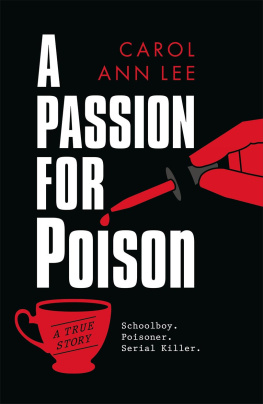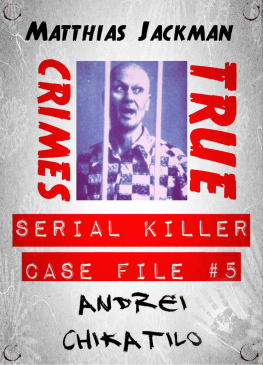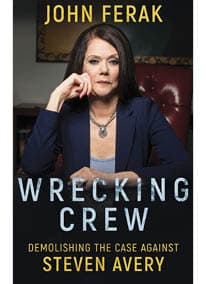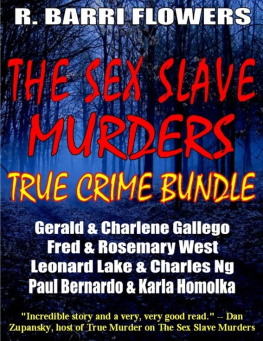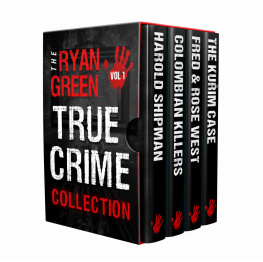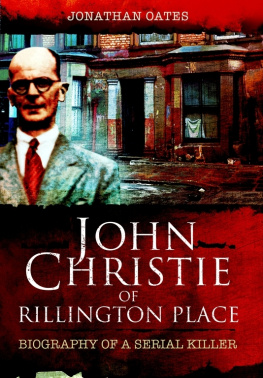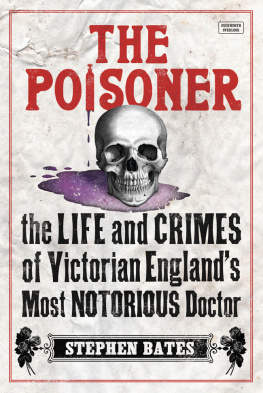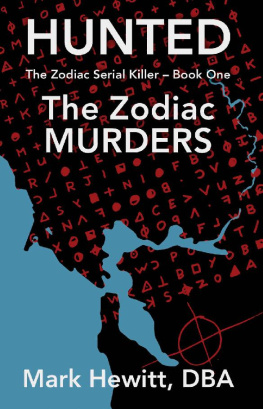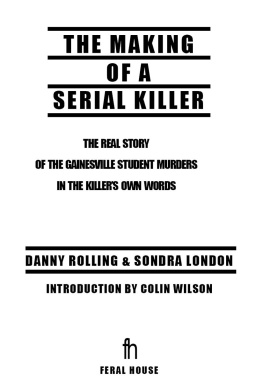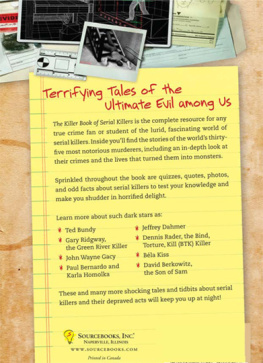

Also by Carol Ann Lee
Non fiction
The Pottery Cottage Murders (with Peter Howse)
Somebodys Mother, Somebodys Daughter
The Murders at White House Farm
Evil Relations: The Man Who Bore Witness Against the Moors Murderers (with David Smith)
A Fine Day for a Hanging: The Real Ruth Ellis Story
One of Your Own: The Life and Death of Myra Hindley
The Hidden Life of Otto Frank
Roses from the Earth: The Biography of Anne Frank
Fiction
The Winter of the World
Childrens books
Anne Frank and the Children of the Holocaust
Anne Franks Story

First published in the UK by John Blake Publishing
An imprint of Bonnier Books UK
4th Floor, Victoria House,
Bloomsbury Square,
London, WC1B 4DA
Owned by Bonnier Books
Sveavgen 56, Stockholm, Sweden
www.facebook.com/johnblakebooks 
twitter.com/jblakebooks 
First published in hardback in 2021
Hardback ISBN: 978-1-78946-431-3
Trade paperback ISBN: 978-1-78946-5631
Ebook ISBN: 978-1-78946-432-0
Audiobook ISBN: 978-1-78946-433-7
All rights reserved. No part of this publication may be reproduced, stored in a retrieval system, or transmitted in any form or by any means, without the prior permission in writing of the publisher, nor be otherwise circulated in any form of binding or cover other than that in which it is published and without a similar condition including this condition being imposed on the subsequent purchaser.
British Library Cataloguing-in-Publication Data:
A catalogue record for this book is available from the British Library.
Design by www.envydesign.co.uk
1 3 5 7 9 10 8 6 4 2
Text Copyright Carol Ann Lee, 2021
The right of Carol Ann Lee to be identified as the author of this work has been asserted by her in accordance with the Copyright, Designs and Patents Act 1988.
Every reasonable effort has been made to trace copyright-holders of material reproduced in this book, but if any have been inadvertently overlooked the publishers would be glad to hear from them.
John Blake Publishing is an imprint of Bonnier Books UK
www.bonnierbooks.co.uk
The whole story is too terrible.
Youll be disgusted and amazed.
G RAHAM Y OUNG ,
POLICE INTERVIEW NOTES, 1972
CONTENTS
A SHORT HISTORY
OF POISON
I TS NOVEMBER 1971, Its November 1971, the turning to ash of an already grey year. Hostilities in Northern Ireland are still on the rise; decimalisation means older people are asking Whats that in real money? every time a transaction is made; President Nixon watches as half a million people march on Washington DC to protest against the war in Vietnam; ultra-violent films Straw Dogs and A Clockwork Orange pack the cinemas; kids are glued to Magpie, Mr Benn, The Clangers and Crackerjack, while their parents favour Z-Cars, Opportunity Knocks, Look: Mike Yardwood! and The Onedin Line; and glam rock makes its shimmering, androgynous debut on Top of the Pops, in the form of Marc Bolan, all bombast, boots and feather boas.
Even in a dull year, the arrest of a Hertfordshire storeman called Graham Young seems unlikely to make much of an impact on British history. But here we are, on a dismal afternoon in Hemel Hempstead, where that same young man reasonably tall, dark-haired, slim of limb and sharp of feature sits in the police station on central Combe Street. Cigarette hooked between his nicotine-stained thumb and forefinger, he asks the detective sitting opposite, Do you know The Ballad of Reading Gaol, Superintendent? He then recites Oscar Wildes famous verse: Yet each man kills the thing he loves/By each let this be heard/Some do it with a bitter look/Some with a flattering word/The coward does it with a kiss/The brave man with a sword.
He pauses, then admits, I suppose I could be said to kiss.
We will find out in due course why the crimes of this unprepossessing young man effected change in several crucial aspects of our laws, forensic science and institutions, but Graham Youngs choice of words echo those of dramatist John Fletcher, whose comedic 1617 play The Chances is subtitled The Cowards Weapon, Poison. Murder by poisoning is the method most favoured by fiction writers for the killing of one character or more by another. Stealthy, arcane and chillingly abstract in allowing the killer to be miles from the victim when the death blow is delivered, poison is the ink that flows through many a crime writers pen, a symbol of sin and treachery. And very often, those stories are inspired by real-life murders, for poisoners are strangely unique among their homicidal peers, possessed of a macabre decadence that imbues their crimes with an eerie, inappropriate nostalgia.
The history of poison is as old as time itself. In the prehistoric world, hunters dipped their arrows in snake venom while the ancient indigenous people of South America fashioned poison darts from plant sap and the venom of frogs (there are over 200,000 poisonous animals, including fish, spiders, bees, snails and birds, whose feathers are toxic to the touch). The Greek word toxicon refers to poison arrows and has given us the words intoxicated (sickened by poison arrows) and toxin. These poison arrows appear in the works of Greek philosopher Aristotle, who refers to the nomadic Scythians and their weapons, infused with a blend of decomposing blood liquid waste and fluid from rotting snakes, which could result in septicaemia. Aristotle also mentions his fellow Greek philosopher Socrates, sentenced to death in 399BCE for allegedly corrupting Athens young people. Socrates chose poison as a form of execution and died among friends after imbibing hemlock, a plant said to have turned deadly after Jesus blood was spilled upon it where it grew on the hillside of his crucifixion.
Earlier still, we find recipes for poison written in hieroglyphics on one of the worlds oldest medical documents, the Ebers Papyrus. The first known Egyptian pharaoh, Menes, took a keen interest in poison and one of the most famous self-inflicted deaths in history is Cleopatras alleged suicide using asp venom. The father of Chinese herbal medicine, Shen Nung, experimented with 365 herbs before one killed him, while the first Chinese emperor, Qin Shi Huang, poisoned himself in his search for the elixir of life. Poison was the weapon of choice for assassins of the ancient civilisations of Greece, Persia and India, where Mughal emperors would present their enemies with poison-infused robes and criminals were sentenced to death using toxins.
Ancient Roman law contains the first legislation against poisoning. The dictator Sulla issued the Lex Cornelia de Maiestate in response to the rash of assassinations; no less than six emperors were poisoned to death. Claudius wife Agrippina poisoned him to advance the career of her son, Nero, who then employed a woman named Locusta to act as his personal advisor on the matter; with her expertise, he was able to dispose of his mother, brother and several wives. To gain the throne, Nero also poisoned his stepbrother. In all, 170 women were found guilty of maliciously administering poison during Roman rule, and one theory holds that the empires decline and fall was due to lead poisoning from the water pipes; there may be some truth in that, since symptoms include depletion of mental skills and loss of libido, with some emperors displaying signs of madness and the population as a whole suffering decreased fertility.
Next page
